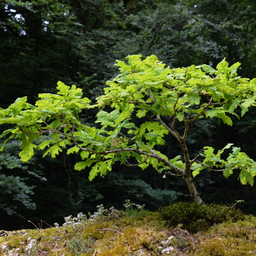
FILIPPO has started a subscription of 2 trees in France
€72,224
collected of €231,802
Hydraulic and biological diagnosis (study to define the work needed to restore the ecological functions of the ponds)
Restoration work (dredging, redefinition of banks, creation of hibernaculum)
Post-works biological monitoring (N+1, N+2, N+3, N+5). This monitoring is necessary to measure the impact of the work on the environment and to adapt our management if necessary.

FILIPPO has started a subscription of 2 trees in France

Martin has started a subscription of 3 trees in France

Ivan has started a subscription of 1 tree in Denmark

Ram has started a subscription of 1 tree in France

Charline has started a subscription of 1 tree in France

Simon purchased 1 Pedunculate Oak from Lacelle Forest (Corrèze, FR)

Simon purchased 1 Norway Spruce from The Old Gravel Forest in Nysum (Nordjylland, DK)

Kay purchased 1 Newly planted forest bundle bundle from Several forests (DK)

Arnaud purchased 1 Beech from Orø-Margrete Forest (Sjælland, DK)

Kevin purchased 1 Small Christmas gift 2025 bundle from The Old Gravel Forest in Nysum (Nordjylland, DK)

Johan purchased 1 Downy Oak from Yzeures-sur-Creuse forest (Indre-et-Loire, FR)

Johan purchased 1 Downy Oak from Yzeures-sur-Creuse forest (Indre-et-Loire, FR)

Johan purchased 1 Downy Oak from Yzeures-sur-Creuse forest (Indre-et-Loire, FR)

Johan purchased 1 Downy Oak from Yzeures-sur-Creuse forest (Indre-et-Loire, FR)

Corentin gave away 1 Douglas fir from Launay Guen Forest (Côtes-d'Armor, FR)

Johan purchased 1 Sessile Oak from The Old Gravel Forest in Nysum (Nordjylland, DK)

Johan purchased 1 Downy Oak from Yzeures-sur-Creuse forest (Indre-et-Loire, FR)

Johan gave away 1 Sessile Oak from The Old Gravel Forest in Nysum (Nordjylland, DK)

Ambre purchased 1 Downy Oak from Yzeures-sur-Creuse forest (Indre-et-Loire, FR)

Ambre gave away 1 Downy Oak from Yzeures-sur-Creuse forest (Indre-et-Loire, FR)

Ambre gave away 1 Downy Oak from Yzeures-sur-Creuse forest (Indre-et-Loire, FR)

Ambre gave away 1 Downy Oak from Yzeures-sur-Creuse forest (Indre-et-Loire, FR)

Virginie gave away 1 Douglas fir from Launay Guen Forest (Côtes-d'Armor, FR)

Yagmur gave away 1 Douglas fir from Launay Guen Forest (Côtes-d'Armor, FR)

Trine Nørrelund gave away 1 Sessile Oak from The Old Gravel Forest in Nysum (Nordjylland, DK)

Peter gave away 1 Newly planted forest bundle bundle from Several forests (DK)